LG OLED M4 review: wireless wonderment
LG's wireless OLED TV is a wonder for wall-mounting without the cable clutter

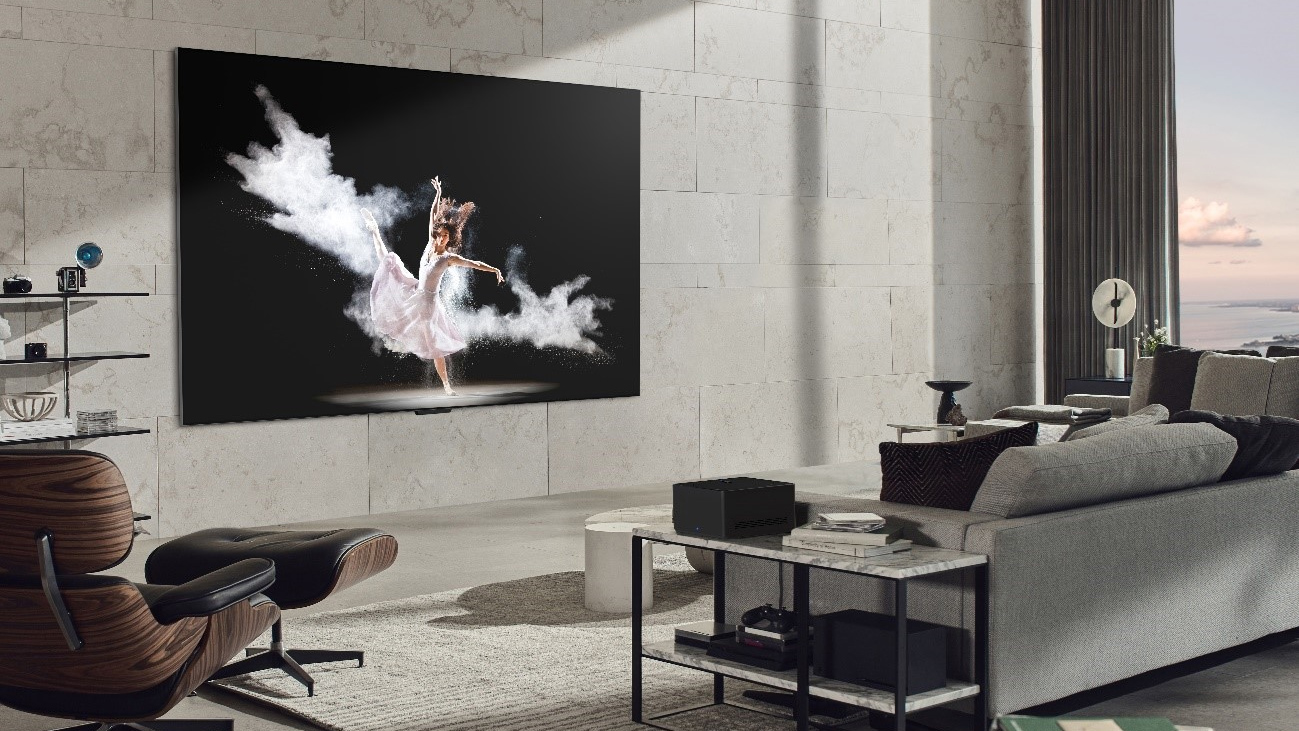
It may seem strange that an expensive TV, one with poor sound and that costs a fair bit more than a TV from the same brand with picture quality so similar as to be identical, scores the full 5 stars. But the LG M4’s wireless connectivity is so brilliantly implemented, so effective and so very gratifying, that in actual fact 5 stars is a no-brainer if you want the best OLED but without the cable madness norm – making it an ideal wall-mount option.
-
+
Brilliantly balanced and enjoyable images – akin to G series
-
+
Fine ergonomics
-
+
It's wireless!
-
-
Sound is feeble
-
-
WebOS is now more ad-centric than before
-
-
Quite a big price premium over the G series
Why you can trust T3

LG’s G4 range of OLED TV is widely acknowledged to be among the very best OLED televisions you can currently buy. ]
So how do you make a product as accomplished as that even more appealing? By turning it into the M4, that’s how, and making it wireless – save for a power cable, of course.
That wireless feature sends the convenience factor through the roof. And cutting the need for cables connected to the set itself makes it ideal for wall-mounting. If you can afford it elevated price tag, of course. So, is the OLED M4 worth it?
How much does LG's wireless OLED TV cost?
The LG OLED M4 – here reviewed in its 65-inch form – is on sale now, and in the United Kingdom it’s priced at £3799 – nominally, at least. In the United States it costs more like $4299, while in Australia it goes for around AU$8299. Which, we can all agree, is proper money for a 65-inch OLED TV – even one with a wireless party-piece as impressive...
The OLED M4 is also available in a 77-inch size with the same panel, while 83-inch and 97-inch models do also exist at significantly elevated prices – but do not feature the same OLED panel type. It's also worth pointing out at this juncture that there's a newer OLED M5 model, which also comes with a 55-inch model option.
What's new in the LG OLED M4 compared to the M3?
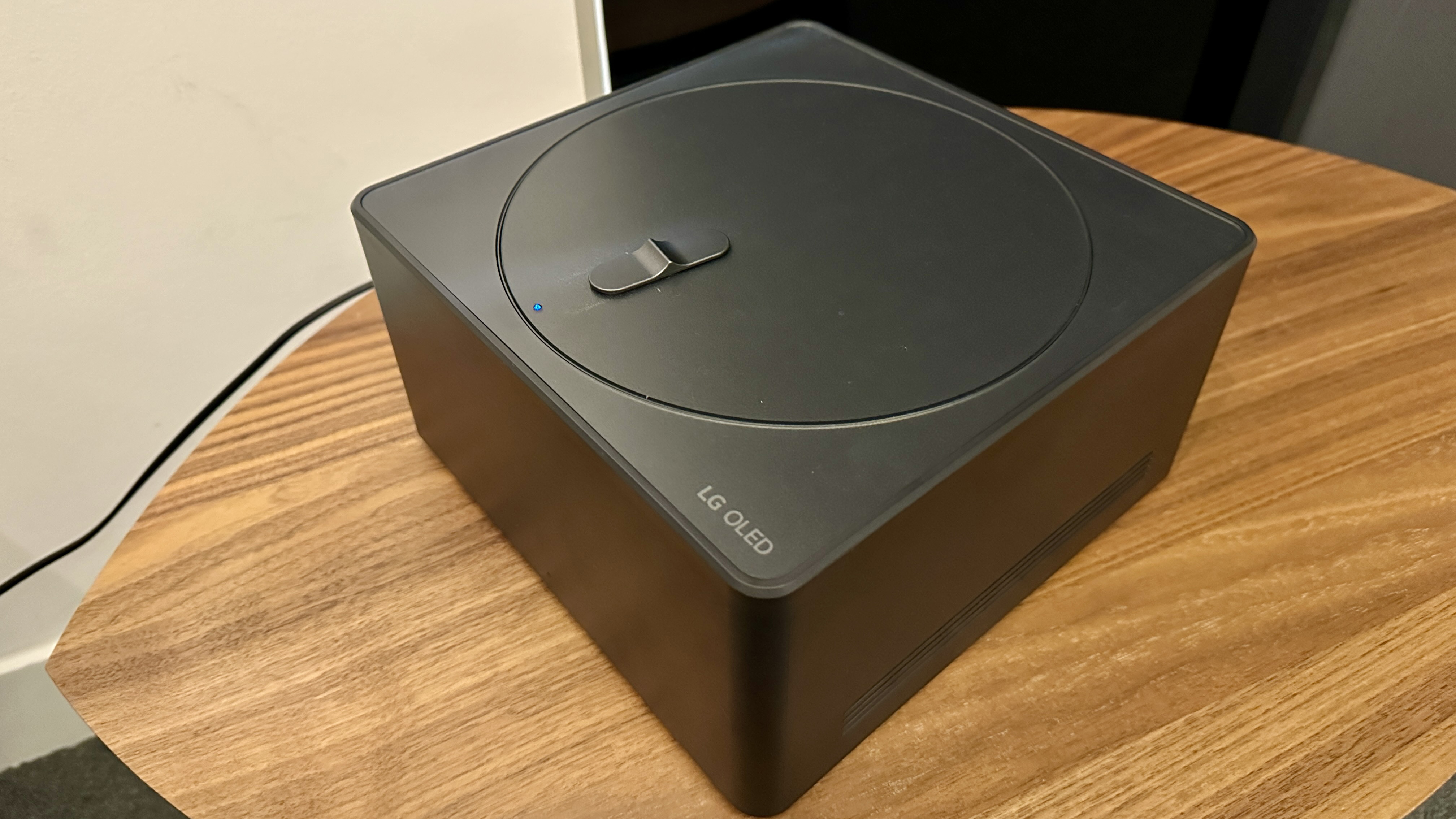
I’m going to be making this point quite a lot during the course of this review: if you’re in any way familiar with the LG G4 OLED TV, or have at least read the T3.com review, a lot of the M4 is going to be very familiar. In fact, there’s really only one meaningful difference – the Zero Connect Box for wireless connectivity.
So yes, this is a 4K OLED TV with Dolby Vision HDR compatibility and a 120Hz refresh rate. It uses a second-generation MLA (‘micro lens array’) panel, which sees literally billions of miniscule lenses arranged in front of the light-emitting OLED pixels in an effort to extract unOLED-like levels of brightness. It’s fitted with LG’s latest processing engine, called Alpha 11 Super Upscaling 4K, and this means it has a number of excitingly named algorithms and routines ready to maximise your viewing experience.
The A11 processing chip uses AI, which is of course currently the height of fashion, to optimise the depth and three-dimensionality of images, to muster more dynamic highlights in images, and to deliver overall picture performance that’s as accurate as possible. You may not have immediately realised that your nice new OLED TV features things like ‘Object Enhancing by Visual Perception’, ‘Peak Highlighter’ and ‘AI Director Processing’ – but once you’ve seen what they’re capable of you’ll wonder how you ever managed without them.
Even the audio performance gets in on the AI action. The M4 features 60 watts of power to drive a 4.2-channel downward-firing speaker array, and it’s augmented by ‘Clear Voice Pro’ – this that uses AI voice remastering technology in an effort to ensure dialogue is distinct and projects properly.
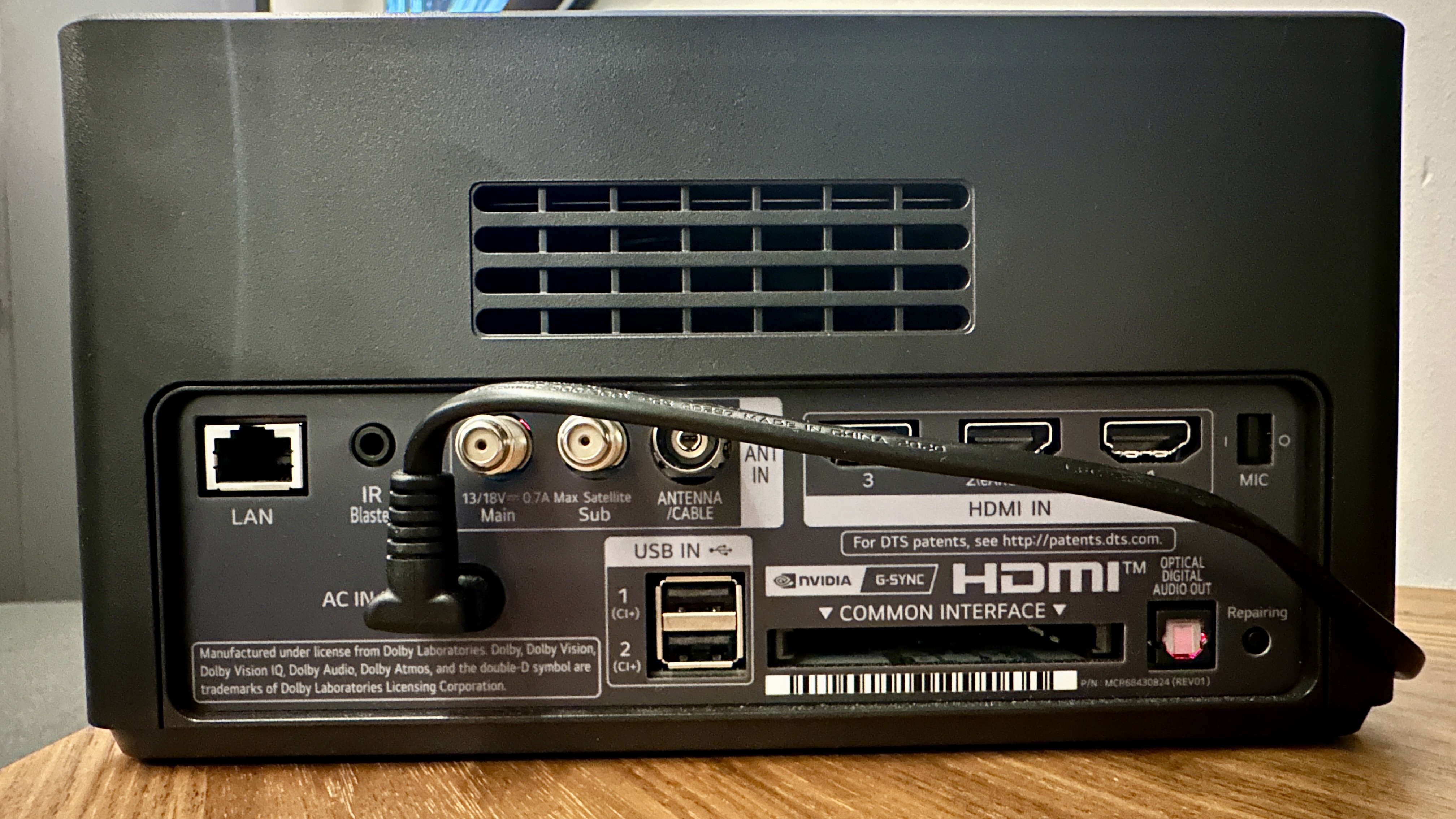
Unlike the G4, though, the M4 screen requires one connection – because it requires mains power, of course. But every other connection, whether wired or wireless, is taken care of off-board by that Zero Connect Box.
Zero Connect is fitted with three HDMI inputs, all at 2.1 standard and one eARC-enabled. It also has aerial binding posts for its TV tuners, a pair of USB-A slots, a CI card slot, an Ethernet socket and a digital optical output. Wireless connectivity, meanwhile, runs to Bluetooth 5.1 and Wi-Fi 6.
Connect your source equipment to the box, and then move the large dial with sliding switch that’s on top – it rotates to line up the box’s transmission with the screen’s receiver, and its switch slides to increase or decrease the angle of transmission. It doesn’t even need line of sight (although that’s obviously preferable) – as long as it’s positioned lower than the screen, and as long as you haven’t placed it in a lead-lined box or something, it will transmit your source content to the screen wirelessly. Note that the newer M5 model is even more adept and can transmit through some surfaces, such as in a wooden enclosure, such as a piece of AV furniture.
The wireless aspect of this Zero Connect Box doesn’t impact on the OLED M4's specification or ability to deal with the most up-to-date content, either. The M4 can deal with 4K Dolby Vision HDR images from a Blu-ray player or your favourite streaming service, as well as Dolby Atmos spatial audio from those same places.
Even 4K at 144Hz with ALLM, VRR, HGiG, FreeSync and G-Sync, and all the other cutting-edge gaming features for consoles and PCs, is on the wireless menu. All transmissions happen using the 60GHz wireless band, which is as empty as the 2.4GHz and 5GHz bands are congested.
Is the OLED M4's picture the same quality as the G4?
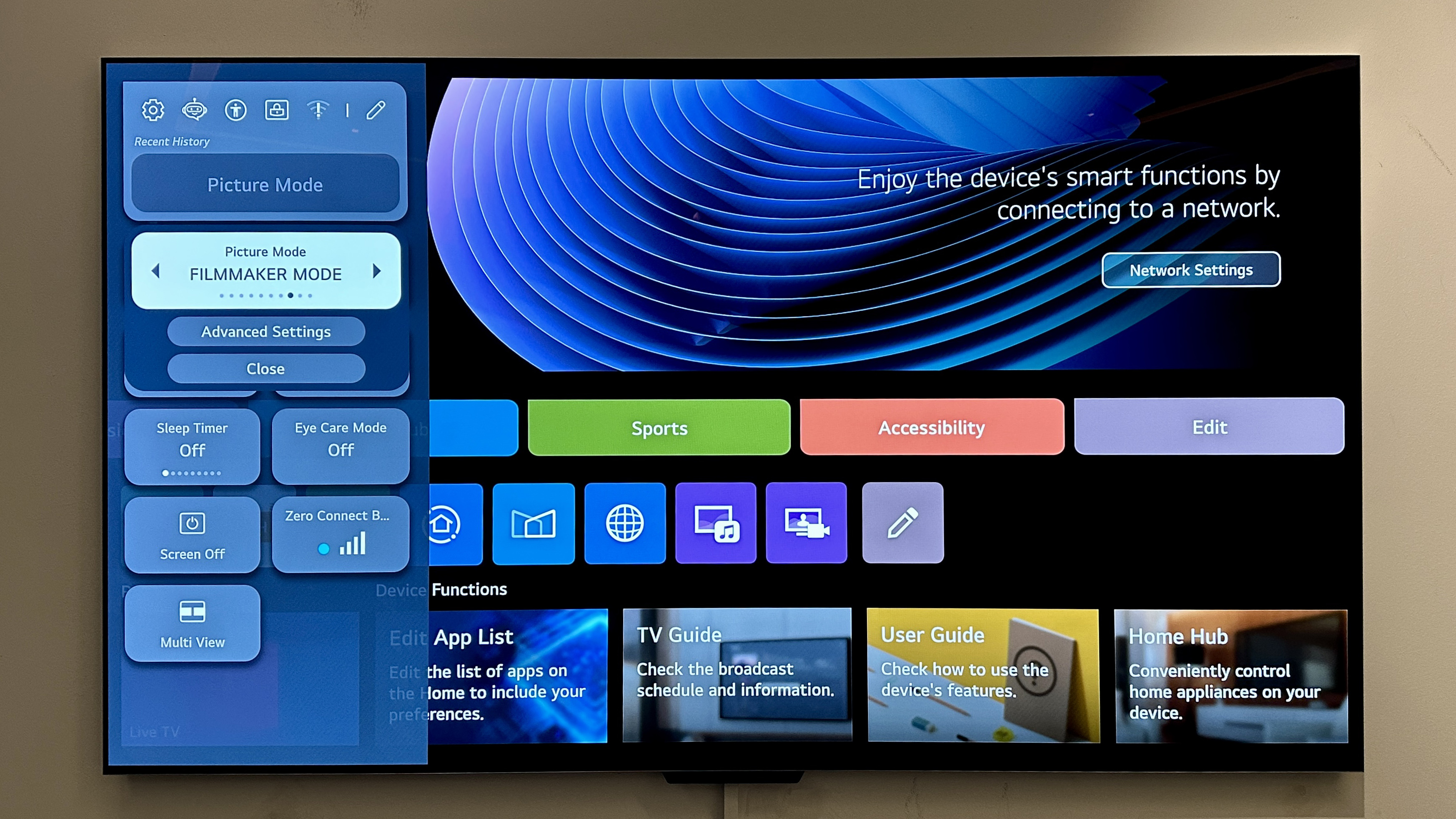
The fact that the M4 is, again, so very similar to the G4 is, in this instance, perhaps the most gratifying thing of all. Because the M4 manages to pretty much duplicate the performance of the G4, while all the time operating wireless aside from its connection to mains power.
Which means its picture quality is uncomplicatedly impressive. Black tones, sure enough, are deep and lustrous, and there’s an impressive amount of detail revealed in even the murkiest scenes. Wirelessly send some dark-hued content that lesser TVs happily crush, and the M4 will extract and contexualise a huge amount of variation even in the most unpromising circumstances. White tones are just as detailed, just as loaded with information – and thanks to some MLA magic, they’re brighter and cleaner than anyone is expecting from an OLED TV (or, at least, anyone who hasn’t seen a G4). Which, in turn, means that contrasts are strong, dynamic and entirely convincing.
In between these two extremes, the colour palette manages to be vibrant and energetic yet balanced and naturalistic at the same time. The LG does particularly good work with skin tones, teasing out variations of tone and texture that can easily elude even the best of its rivals. Allied with confidently described depth of field, smooth edge definition and vanishingly low picture noise, it makes for a thoroughly enjoyable watch.
Switch down to some sub-4K content and the good news keeps on coming – or, at least, it does if you don’t step down too far. Full HD (1080p) stuff looks poised and, a slight drop-off in detail levels aside, is every bit as satisfying as top-of-the-shop Ultra-HD (4K) content. Reduce the resolution of the incoming stuff from there, though, and the M4 throws in the towel somewhat – so the lesson is ‘don’t watch daytime TV reruns of 80s shows’ (unless you like images that manage to be soft and indistinct yet edgy and jagged at the same time).

All of the above assumes you’ve spent just a little time investigating the LG’s picture-processing options, of course. The A11 has a lot going for it, but its most aggressive modes look just that: aggressive. It’s not impossible to make everything you watch on your M4 look flat and soap operay – fortunately it’s not impossible to avoid this, either.
Apart from being one HDMI socket down compared to the G4, the M4 is every bit as much the gamer’s friend as its wired sibling. Lag is super-low, which is even more impressive given the way the screen is getting its information, and the TV’s facility with lighting effects, contrasts and motion control makes both console and PC gaming a painless and thoroughly enjoyable experience.
‘Enjoyable’ is not the word that applies to the M4’s sound quality, though. On paper, 60 watts of power driving a 4.2-channel downward-firing array looks like a recipe for half-decent performance – but that’s just not the case. The AI aspect of its specification helps the LG project dialogue well and ensure the midrange is always distinct – but the overall tonality here is breathless and boneless, with scant low-frequency presence and a grievously rolled-off top end.
I suppose the one thing LG might suggest in mitigation is that few people will be spending the thick end of four-grand on a TV without budgeting for an appropriate audio system – and it might further point to the M4’s compatibility with the best soundbars for LG TVs, including its ‘WOW Orchestra’ soundbars. You'll really need to buy one, too, as anyone who thinks they might be able to live with the audio quality that’s available here will think again almost immediately...
Is there anything to not like?
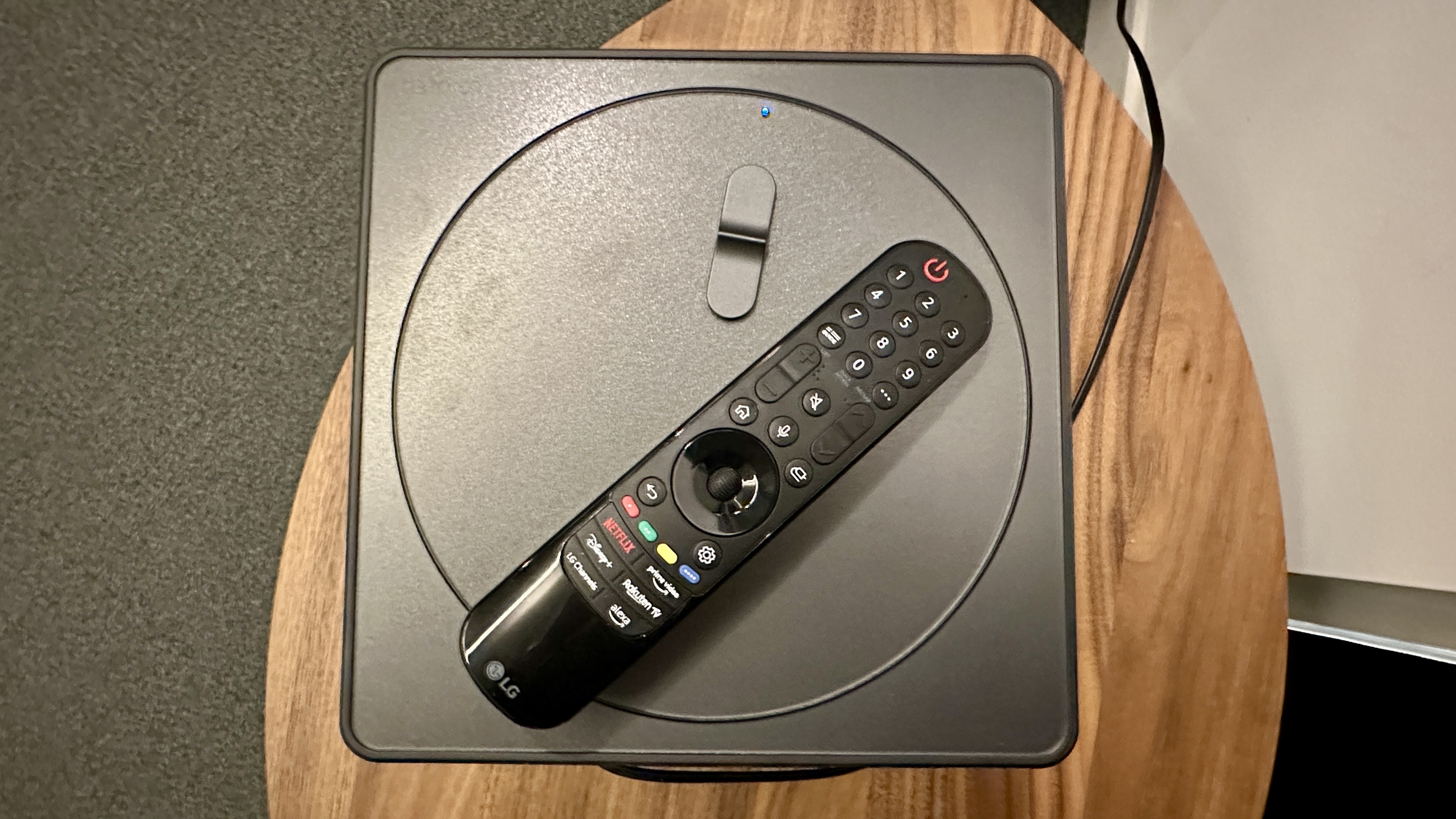
Once again: if you’ve seen an LG G4 OLED TV, there will be nothing to shock or surprise you here – with a couple of extremely minor differences, the M4 is so similar as to be identical.
If you haven’t seen an LG G4 OLED TV, though, here’s what you need to know. The M4 is a beautifully constructed, flawlessly finished TV and is absolutely ideal for wall-hanging (unless you're buying larger than the 77-inch anyway). The 65-inch model I'm reviewing weighs 23.5kg, so means you can’t just hook it onto a plasterboard partition, mind you… although if your wall is sturdy enough the M4’s compatibility with 300 x 300mm VESA mounts means acquiring a bracket is simplicity itself.
As far as usability goes, you’ve a number of well-implemented options. LG’s proprietary smart TV interface is here in its webOS guise, and although it’s been rearranged a little in order to host more adverts (ugh), it’s still a logical, easy-to-navigate, extensively stocked and sensibly laid-out set-up.
You can make your way around webOS using the Magic Remote that will be familiar to any LG OLED TV owner from the last 10 years or so, or you can use the ThinQ app that’s free for iOS and Android. If you’d rather just ask for what you want, however, then the M4 has Amazon Alexa voice assistance built-in.
Verdict
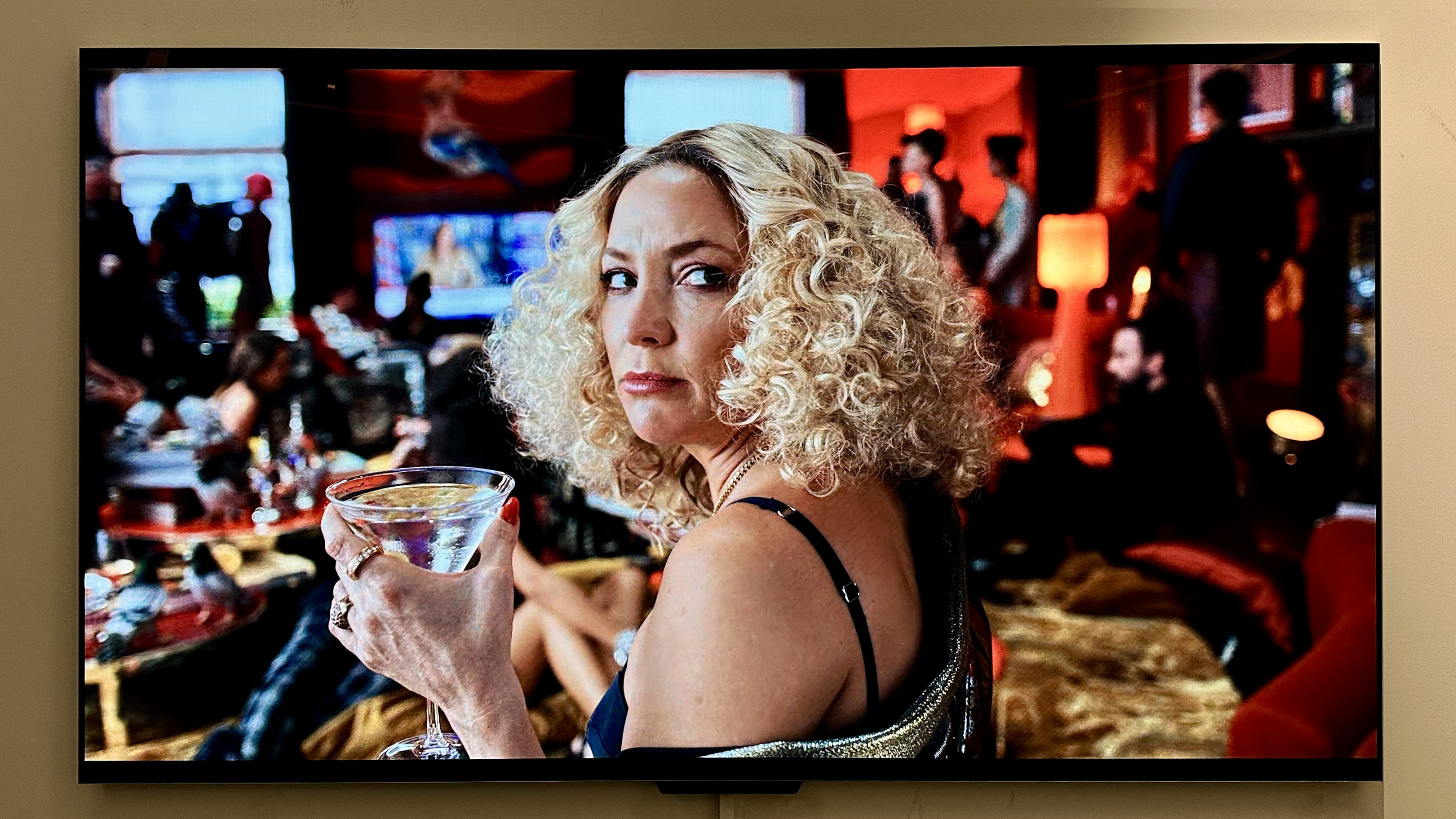
It may seem strange that an expensive TV, one with poor sound and that costs a fair bit more than a TV from the same brand with picture quality so similar as to be identical, scores the full 5 stars.
But the LG OLED M4’s wireless connectivity is so brilliantly implemented, so effective and so very gratifying, that in actual fact 5-stars is a no-brainer score for such an accomplished set.
If you want the best OLED TV, but without the cable clutter then the M4 is an ideal wall-mount option. One that we think its worth all of its big asking price all day long.
Also consider
If you absolutely positively have to have a wireless TV, then I have nothing else for you to consider – other than the newer OLED M5, of course. If, however, you simply fancy a high-achieving OLED TV and don’t mind some cabling, the place to start is the LG G4, but of course – because it’s the TV the M4 is based on. Otherwise, Sony’s A95L is well worth considering for its spectacular QD-OLED images.
Sign up to the T3 newsletter for smarter living straight to your inbox
Get all the latest news, reviews, deals and buying guides on gorgeous tech, home and active products from the T3 experts
Simon Lucas is a freelance technology journalist and consultant, with particular emphasis on the audio/video aspects of home entertainment. Before embracing the carefree life of the freelancer, he was editor of What Hi-Fi? magazine and website – since then, he's written for titles such as Wired, Metro, the Guardian and Stuff, among many others. Should he find himself with a spare moment, Simon likes nothing more than publishing and then quickly deleting tweets about the state of the nation (in general), the state of Aston Villa (in particular) and the state of his partner's cat.
You must confirm your public display name before commenting
Please logout and then login again, you will then be prompted to enter your display name.
-
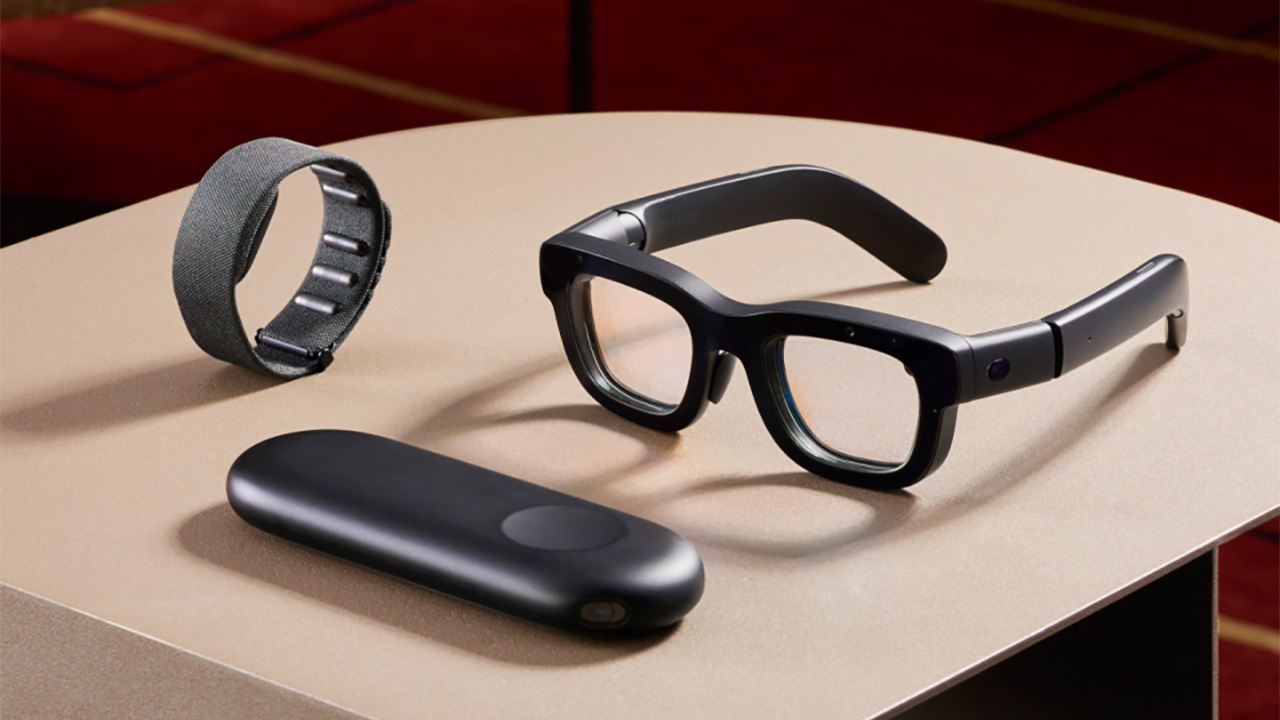 The next big tech battlefield is AR Glasses – and Apple is ready to fight
The next big tech battlefield is AR Glasses – and Apple is ready to fightTim Cook is said to "care about nothing else"
By Sam Cross Published
-
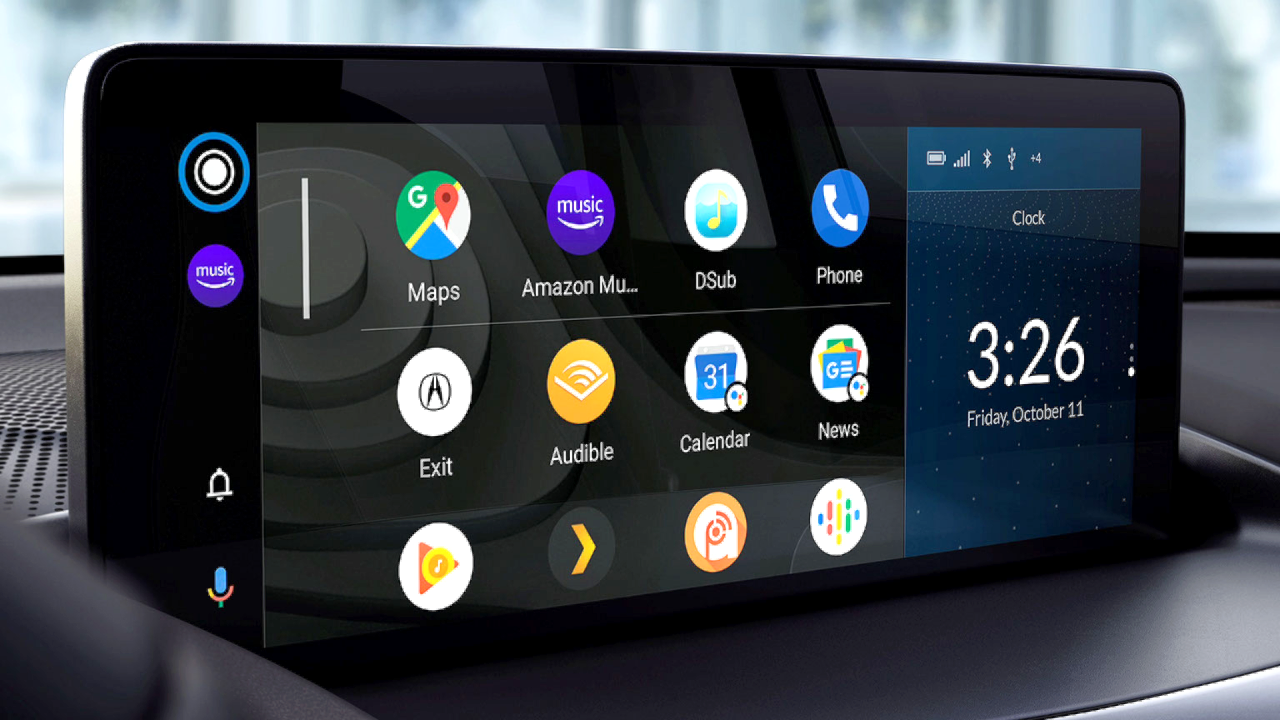 Android Auto could add a feature that nobody asked for, but might appreciate anyway
Android Auto could add a feature that nobody asked for, but might appreciate anywayThis futuristic addition to Android Auto could change the experience forever
By Chris Hall Published
-
 Supercharge your aerobic engine with this three-move rower workout
Supercharge your aerobic engine with this three-move rower workoutImprove your cardiovascular fitness and burn through calories
By Bryony Firth-Bernard Published